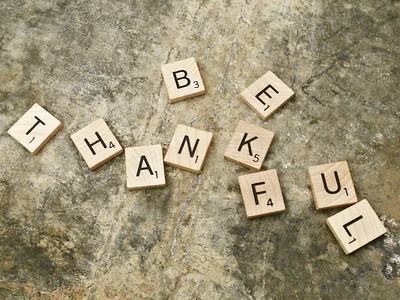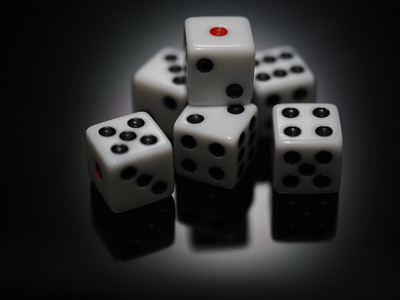Elevate the Holiday Season by Understanding WHY
 What is this all about?
What is this all about?
What is the reason you do what you do? What’s your WHY behind the WHAT?
When you don’t do what you said you’d do, what’s the reason? And what does that say about you?
If the reason is right, I think it can be okay NOT to do something you said you’d do. But I try to set a high bar on this one.
When things get tough, what gets you to push through? For me, it’s about doing something for the people I care about.
When things go well, what causes you to give credit to others? For me, it’s about building momentum and helping people understand the special things they did to make it happen.
Why do you show up? When you ask yourself, do you have an answer?
How do you show up for? And the more difficult question – WHY?
When is it okay to be compliant in a minimum energy way? And how do you decide that’s okay?
When do you decide to apply your whole self to something that others think is misaligned with the charter? I think this says a lot about a person.
What are you willing to do even though you know you’ll be judged negatively for doing it? I’m often unsure why to do it, but I’m sure it’s the right thing to do. I don’t know what that says about me, but I’m okay with it.
To me, the WHY is far more important than the WHAT. The WHY explains things. The WHY tells the story. The WHY gives guidance on what will happen next time.
When you do something happen that’s out of the ordinary (a WHAT), I suggest you try to figure out the WHY. I have found that some seemingly nonsensical WHATs make a lot of sense when you understand the WHY underpinning the WHAT.
And during this holiday season, may you give people the benefit of the doubt on their WHATs, and take the time to understand their highly personal WHYs. That can make for a happier holiday season for all.
Image credit — Christopher Henry
How To Battle Emotional Stress
 Emotional stress is similar to physical stress. Both are exhausting, depleting, distracting, and physically limiting. But with physical stress, the cause is clear; the cause of emotional stress can be invisible.
Emotional stress is similar to physical stress. Both are exhausting, depleting, distracting, and physically limiting. But with physical stress, the cause is clear; the cause of emotional stress can be invisible.
When you go to the gym and lift weights, the physical stress is clear. You can see the dumbbells move up and down; you can see your arms connected to the dumbbells as they move; and you can feel your muscles do their work. And after the workout, you know why you are tired, and you expect to feel sore the next day. Action-response. Input-output. Cause-effect.
When you go into the office and do your work, the emotional stress is less clear. You can see what must be done, but sometimes you are too busy to do it. You want to do it, but you cannot. And that mismatch between what you want and your inability to get it done creates emotional stress. You take no action, yet you still experience emotional stress. There is input but no output, yet there is stress. There is a cause you cannot affect, and you create emotional stress.
With physical stress, you generate stress through movement. With emotional stress, you can generate stress through a lack of movement or progress.
If you forgot you went to the gym yesterday and woke up this morning tired and with sore muscles, you’d be confused about what was going on in your body. Why am I sore? Why am I tired? I don’t get it. What’s wrong with me? But, in truth, there would be nothing wrong with you. There would be a reason for your bodily tiredness and soreness, but the cause would be invisible to you. Emotional stress is like this.
Many situations can cause you to create emotional stress. For example, emotional stress can come when things don’t go as planned, when someone treats you poorly, or when the outcome is different than your expectations. But because your day is busy and you are juggling projects, the cause of your stress can be less than obvious. You feel more tired than you should, but you don’t know why. You are irritable, but you don’t understand what’s behind it. And maybe you ask – What’s wrong with me? And maybe you’re confused, and you judge yourself negatively.
I think we can reduce our emotional stress if we are more aware of its causes. What if we saw our workplaces as a gym? What if we saw our workdays as physical workouts? We could label our meetings as emotional bench press exercises. We could declare our conversations are dumbbell curls. We could see our deep work as an aerobic activity.
Why not give it a try? You may be more relaxed when you get home after your eight-hour “workout.”
Image credit — Joachim Dobler
We are more than our knowledge, skills, and abilities.
 Personal energy. Mojo. Vigorous interest. Gravitational field. Life force.
Personal energy. Mojo. Vigorous interest. Gravitational field. Life force.
When the project is stalled, someone adds their personal energy to reestablish momentum. No one asks them. They step up. And without their personal energy, the floundering would flounder on.
When there’s a risky decision to make that everyone is unwilling to make, someone proactively injects their mojo to unstick the decision. They aren’t invited to step up, but they step up nonetheless. Their mojo doesn’t make the difficult decision, but it makes it possible.
When the team is stuck and progress is insufficient, someone takes vigorous interest in the situation to unstick the team and reestablish momentum. They actively demonstrate their interest by getting up to speed, formulating the problem, and creating the conditions for a good solution to emerge. They don’t do it for credit. They do it because they care. And they do it in a way that they will get invited back under similar circumstances.
When there is chaos in uncertainty, someone attends the crisis mitigation meeting, and their gravitational field calms the room. They don’t do anything special. They sit calmly and emanate confidence, kindness, and caring. There is no need for words, just bodily acknowledgement that things will be okay. Everyone lightens, but no one knows why. Their gravitational field doesn’t create the mitigation plan, but it puts everyone at ease so the plan can emerge. They do this because they know it’s important, not because they were invited.
There is more to people than their knowledge, skills, abilities, and experience. And there is more to us than core competencies. People have a life force. It’s not measurable. It’s not quantifiable. It’s not tangible. But it’s real. You know the someones who step up. You know the someones who run toward the problems. And you know the someones who pick you up when you need it. If you take a minute to visualize those someones, you will know what life force is. You may not be able to name it, but you’ll know it.
Take another minute to write down how their life force manifests. Create a list of what you’ve seen them do and the impact they’ve made. This will give you insight into how you’d like your life force to manifest. Then, tomorrow, help your life force do its thing.
Overcoming Your Success
 Success locks in current practice.
Success locks in current practice.
May you have the blessing of declining revenues to see what must change.
Year-on-year growth hides inefficiencies.
May you have one bad year to help you see those inefficiencies.
Past success blinds us to the onset of decline.
May you have brave heretics to sound the alarm early in the decline.
A strong track record of growth prevents new ideas from seeing the light of day.
May you allocate revenue from that growth to bring the next-generation offering to life.
High market share creates intellectual inertia and stagnation.
May you have the luxury of strong competitors that get stronger every year.
A history of unassailable technical advantage breeds competence-induced failure.
May you have the courage to obsolete your best work.
A strong focus on process, combined with remarkable success, extends standard work beyond its useful life.
May you recognize that commercial conditions have changed, and it’s time to dismantle the very thing that generated your success.
Image credit — Thomas_H_foto
Thankfulness Is A Choice
 Some have more than you, some have less. Can you be thankful?
Some have more than you, some have less. Can you be thankful?
Things will go well, and things will go poorly. Will you be thankful?
Some will support you, and others will diminish. Can you be thankful?
Truth will be told, and so will lies. Will you be thankful?
You can prevent some problems, but others you cannot. Can you be thankful?
Some of your hypotheses will be validated, and others will be invalidated. Will you be thankful?
Sometimes you will be supported, and other times criticized. Can you be thankful?
You will be healthy, and you will be sick. Will you be thankful?
You will get old. Can you be thankful?
Sometimes you will be calm, and other times anxious. But can you be thankful?
Sometimes you will agree with family, and sometimes you will disagree. Can you be thankful?
You will have everything, then it will all go away? Can you be thankful?
Things will be better and worse. Will you be thankful?
There will be success and failure. Can you be thankful?
You will be happy and sad. Will you be thankful?
Some family members will live close to you, and others will live far away. Can you be thankful?
Some friends will support you, and others will bail. Will you be thankful?
Sometimes you will rise to the occasion, and other times you will bail. Can you be thankful?
You will be understood and misunderstood. Will you be thankful?
Thankfulness is a choice. What will you choose?
Image credit — Cindi Albright
Staying Too Long vs. Leaving Too Soon
 When you start something, by definition, you will end it.
When you start something, by definition, you will end it.
All good things come to an end. So do all bad things. That’s how it goes with things.
All new things start with the end of old things. That’s how things are.
What does it say when a phase of your life comes to an end?
Doesn’t the start of a new phase demand the end of an existing one?
When something ends, do you curse it or celebrate it, do both, or neither? And how do you decide?
If you stay with the old thing too long, what does that say? And how do you know it was too long?
Can you know it will be too long before you stay too long?
If you leave too soon, can you know that before you leave?
The follow-on results of a decision do not determine the quality of a decision.
There is no right decision to make.
Make the decision and then make it right.
Image credit — Karissa Burnett
When is a rule not a rule?
 What’s the rule? Are you sure?
What’s the rule? Are you sure?
Where did the rule come from? And how do you know?
When the rule was created, was there also a rule that it could not be changed?
Show me the rule book!
Is the rule always applicable, even after hours?
If the rule is limited to a certain location, work from home.
Is it a rule or a ritual? It’s easier to abstain from rituals.
Is it a rule or a rut? Ruts aren’t rules; they’re just how we’ve done it.
Is it a rule or a guideline? Squinting can easily transform a rule into a guideline.
If there’s a disagreement about what the rule is, take a position that’s advantageous to you.
If you don’t know it’s a rule, there’s no need to break it.
If one knows who broke the rule, was it really broken?
If the rules are unknown, don’t follow them.
If the context changed around the rule, the rule is no longer applicable.
If no one remembers why the rule exists, it’s no longer a rule.
If you don’t like a rule, run an experiment to show its shortcomings.
If a rule blocks progress, make progress.
If no one knows a rule was broken, it wasn’t broken.
Image credit — nirak68
If you’re not misunderstood, maybe you should try harder.
 Don’t tell me what I can do; tell me what I cannot do, so everything else is available to me.
Don’t tell me what I can do; tell me what I cannot do, so everything else is available to me.
It’s faster if you give me smart, hardworking people with little experience. I won’t have to re-teach them, and we can get started right away.
Tell me what you want done, but not how to do it. Choose someone else because I won’t listen.
Don’t ask me to do something that’s been done before. That work is for someone else, and I will teach them how to do it.
I won’t have an answer to your question if it’s not yet time to know the answer. I know you’ll likely be uncomfortable with that.
With administrative requests, I’ll be minimally compliant. I want to conserve my energy for work that everyone else is afraid to try.
Tell me what cannot change so I can constrain that out of the approach. There’s nothing worse than trying to change the unchangeable.
Don’t give me a destination or an idealized future state. I’ll define our location, and we’ll discuss several directions of travel we can investigate in parallel.
Give me an unreasonable time constraint. I’ll have no other choice but to be immensely productive right now.
If at the time of your question, there’s no way I can know the answer, I will tell you. I’m sure you’ll be displeased with me.
Don’t judge me on efficiency because I’m all about effectiveness. Solving the wrong problem efficiently is highly ineffective, and I don’t like that.
When I say no to your request, I always have a reason. But I’m not always aware of the reason.
When I see things differently, I’ll tell you. I’m not being disagreeable. My cynicism is a sign that I care.
When you’re doing new work, it’s okay to be misunderstood. More strongly – if you’re not misunderstood, you’re not trying hard enough.
May you find work that demands you’re misunderstood.
Image credit — Marian Kloon
Sixteen Years of Wednesdays
 I’ve written a blog post every Wednesday for the last sixteen years.
I’ve written a blog post every Wednesday for the last sixteen years.
The first years were difficult because I was unsure if my writing was worth reading. Writing became easier when I realized it wasn’t about what others thought of my writing. For the next ten years, I let go and wrote about things I wanted to write about. I transitioned from describing things to others to writing to understand things for myself. I learned that writing about a topic helped me understand it better.
By writing every week, my writing skills improved. I learned to eliminate words and write densely. Early on, I wanted to sound smart and, over time, I became comfortable using plain language and everyday words. My improved writing skills have helped my career.
Over the last several years, writing has become difficult for me. After 800 blog posts, it became difficult to come up with new topics, and I started putting pressure on myself by trying to live up to an imaginary standard. I blocked my own flow, everything tightened, and the words came reluctantly.
Then I became tired of paragraphs. I wrote in topic sentences, bulletized lists, and a sequence of questions. Each topic sentence could have been the topic of a blog post; the individual bullets were standalone thoughts; and the questions ganged up to build the skeleton of a big theme. For some reason, it was easier to come up with a collection of big thoughts than to write in detail about a single topic.
I’m not sure what the future will bring, but thanks for reading,
Mike
Image credit — chuddlesworth
Skillful Awareness
 When do you bring your whole self to the endeavor? You can’t do this every time, and that’s okay.
When do you bring your whole self to the endeavor? You can’t do this every time, and that’s okay.
What are the conditions that cause you to engage fully? Full engagement is expensive. Spend wisely.
What about the situation causes you to run toward the problem? Solve the right ones, but leave some for the rest of us.
Which situations bring out the best in you? Sometimes your best isn’t very good, and that’s okay.
When do you block yourself from jumping into the adventure? All adventures aren’t worth the jump. Block wisely.
What are the conditions that cause you to phone it in? Sometimes the best choice is a phone call.
What about the situation causes you to give others a chance to run toward the problem? There’s nothing wrong with that. Save yourself for the right problems.
Which situations demand that you protect your best self? It’s okay to protect yourself and live to fight another day. That’s why they make bulletproof vests.
Sometimes we get caught up in the heat of battle and bring our energy in an unskillful way. And sometimes we are lulled into inaction when bringing our energy is the more skillful action.
I have found that maintaining awareness helps me allocate my energy wisely and skillfully.
May you be aware of your surroundings and your self.
Image credit – Jan Mosimann
Decisions, Decisions, Decisions
 If a decision can be unmade, it’s okay to make it quickly.
If a decision can be unmade, it’s okay to make it quickly.
Delaying a decision is a decision.
When a decision remains unmade, there’s a reason. However, that reason is often unspoken.
The effort to make the right decision is proportional to the consequences of getting it wrong.
Decisions are sometimes made without the non-deciders realizing that they were made.
Trouble arises when the decision maker is not the customer of the consequences.
Decisions are made slowly when people are afraid to make them.
When you don’t know a decision was made, you’ll continue to behave as if it wasn’t.
If five people are responsible for the decision, who is responsible for the decision?
Even if you are unaware that a decision was made, you’ll likely be expected to behave as if you knew it was.
If no decisions will be made at the meeting, don’t go. Just read the minutes.
Documenting decisions is not standard work, but I think it should be.
Decisions can be made, not made, unmade, re-made, and re-unmade.
Decisions aren’t decisions until behavior aligns with them.
When a decision is yet to be made, you can influence the decision by behaving as if it was made in your favor.
If you wait long enough, the decision will make itself.
Image credit — yawning hunter
 Mike Shipulski
Mike Shipulski